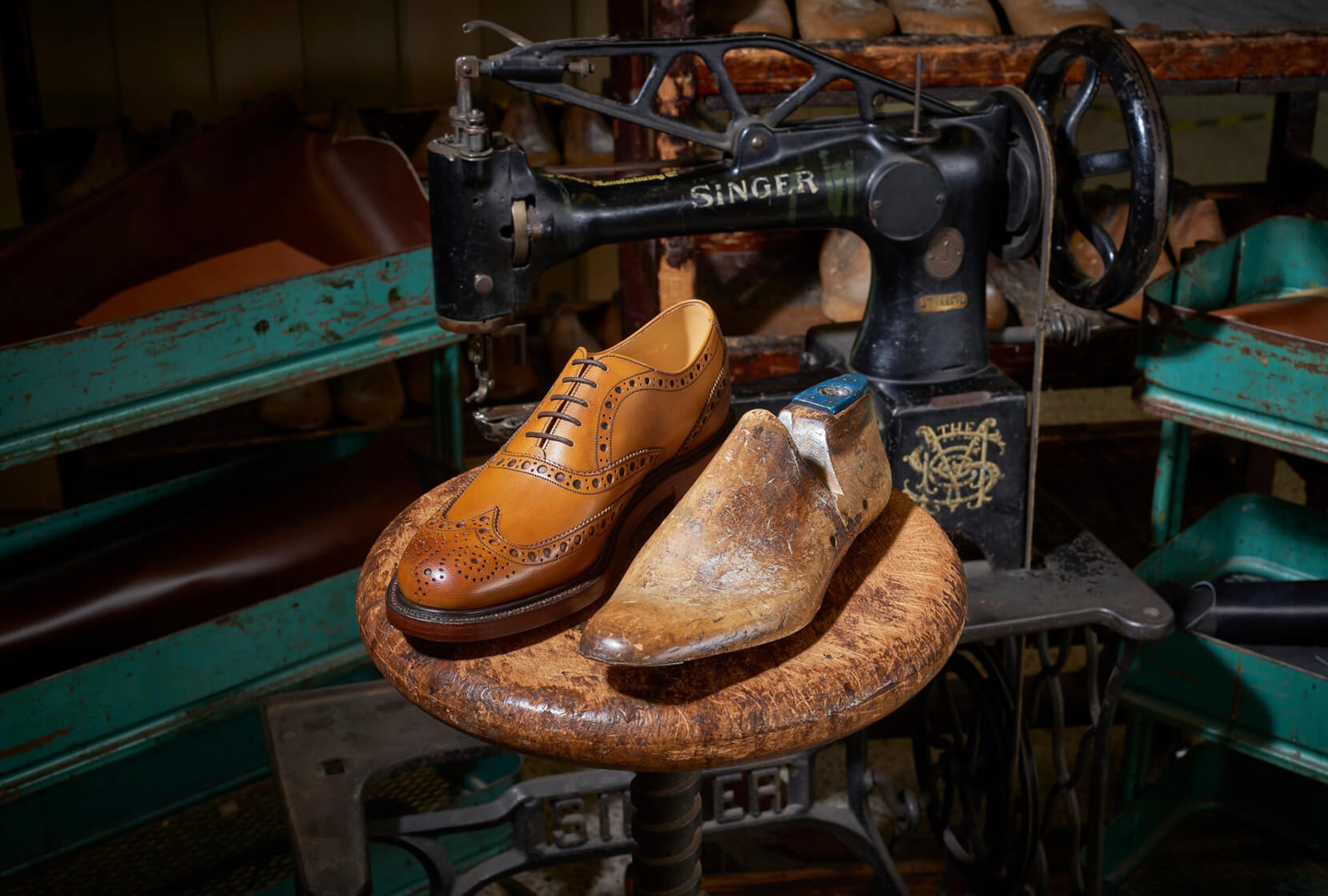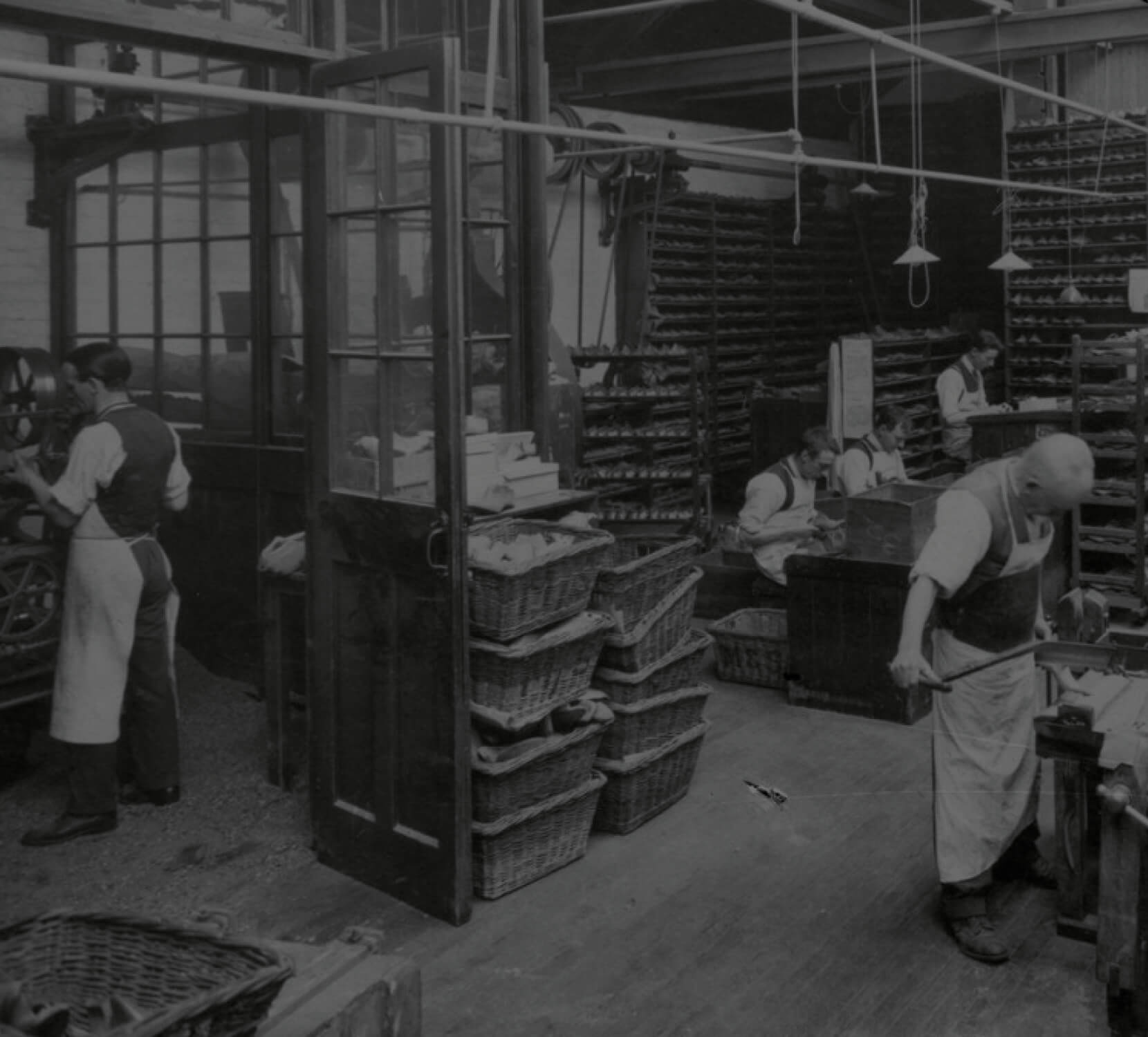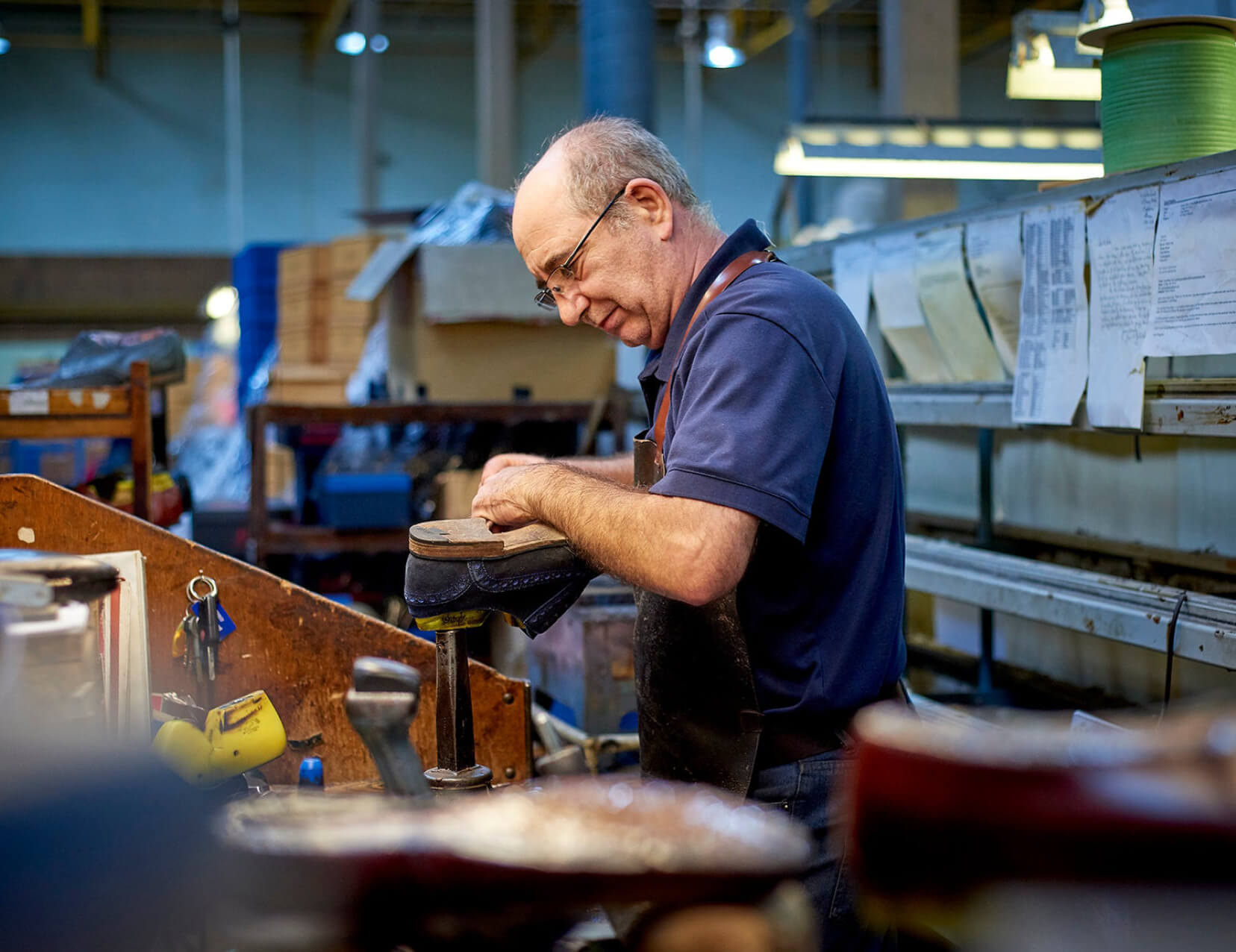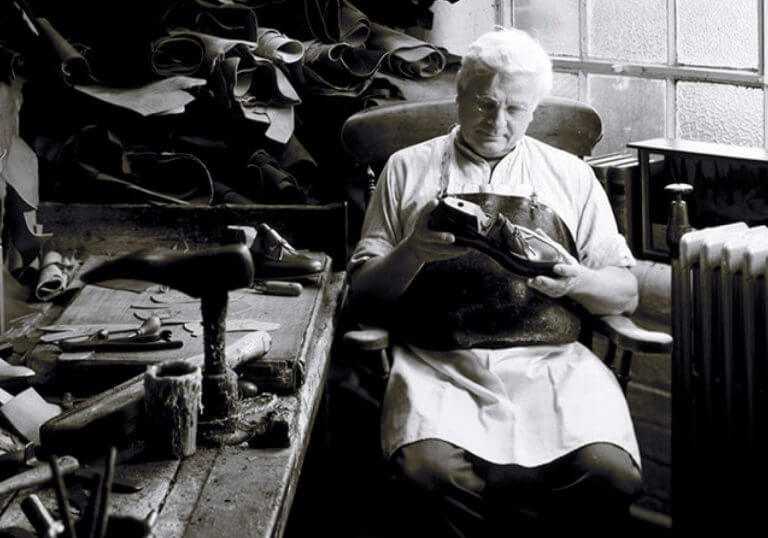With over 140 years in the footwear industry, Barker Shoes is a British tradition, and one that we’re proud to say we stock.
Traditions are important, as they are the passing down of knowledge, customs and wisdom. In the shoemaking world, tradition is very important as the Goodyear welt has been pretty much unchanged for over 150 years, so when looking for your new shoes, look for companies that have a long staked interest in this industry and those that maintain tradition, as they look not to reinvent, but to refine their craft.
Heritage
The foundations of the Barker brand were laid in a humble cottage in the heart of England’s shoe making industry in 1880, by an enterprising Northamptonshire boot maker. Arthur Barker was a skilled craftsman and natural innovator, whose waterproof peg-sole boots were highly sought after. In order to satisfy increasing demands, he employed other craftsmen in surrounding villages to fulfil his growing order book.
With a keen eye on the future and a shrewd sense of timing, Barker invested in factory remises at the turn of the century, later securing contracts to supply the British army with boots during the First World War. Throughout the interwar years, the Barker brand went from strength to strength as Arthur’s three sons joined the family business, taking the brand to new heights on a global scale.
What makes them different?
Every Barker design starts with the art of masking a last (solid form that a shoe is shaped around) and drawing directly onto the tape.
This is to ensure the proportions are perfect for each and every design.
This traditional technique is rarely used in modern day shoe design and is a tradition to be celebrated. Although CAD machines can make aesthetic designs, these designs are the true expressions of an artist.
Where are they made?
In 1987 Barker built a new factory and offices using Northamptonshire local brick and stone. It is now one of the finest footwear factories in Europe and occupies a 4.5 acre landscaped site at the centre of the village of Earls Barton. This site is only a few hundred yards away from the original site of 1880 and currently produce 200,000 pairs of hand crafted shoes each year.



